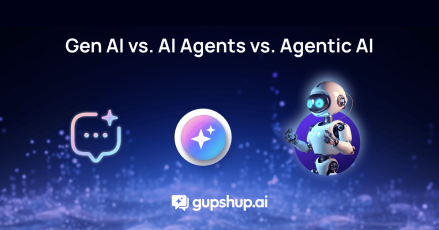Transforming Public Service: The Role of AI Virtual Assistants in Modern Governance

Amidst the relentless march of technological progress, government agencies are embracing technological innovations to improve public service delivery and foster stronger connections with citizens. However, while new policies and programs are being introduced, educating the public about these initiatives remains a challenge.
Traditional communication channels such as newspapers and TV ads can disseminate information effectively but often fall short when it comes to direct engagement and interaction with citizens. For instance, studies show that over 53% of survey respondents face difficulties navigating complex government portals or understanding policy implications.
This gap in communication and accessibility highlights the urgent need for more interactive and user-friendly solutions. At the forefront of this transformation is the AI virtual assistant, a sophisticated tool that leverages conversational AI to enhance citizen engagement, streamline processes, and promote inclusivity.
These advanced systems are effectively connecting traditional governance with contemporary demands for efficiency and accessibility. The recent partnership between the Ministry of Consumer Affairs and Gupshup, as reported by the Economic Times, exemplifies the potential of web-based AI virtual assistants like Jagriti to revolutionize citizen interactions, delivering a new standard for transparency and responsiveness.
What is a Virtual Assistant?
A virtual assistant is a software-based application designed to assist users in managing their tasks or accessing information. In the context of government services, virtual assistants leverage conversational AI to answer queries, provide guidance, and streamline interactions. These AI assistants can process natural language inputs, making them user-friendly and accessible to a broad audience. Whether implemented as chatbots, AI voice assistants, or web-based AI virtual assistants, these tools are pivotal in reducing the complexity of bureaucratic processes.
The Role of Virtual Assistants in Citizen Engagement
The introduction of AI-powered virtual assistants marks a significant shift in citizen engagement strategies. Here’s how these systems improve the interaction between citizens and government agencies:
- 24/7 Availability: Unlike human operators, AI virtual assistants are available around the clock. This ensures that citizens can access vital information or assistance whenever they need it, without having to wait for business hours.
- Multilingual Support: India’s linguistic diversity often poses a challenge for effective communication. Virtual assistants can bridge this gap by offering multilingual support, ensuring inclusivity and broader reach.
- Quick Resolution of Queries: From filing grievances to checking the status of applications, an AI assistant provides instant responses, reducing waiting times and enhancing the user experience.
- Improved Accessibility: Web-based AI virtual assistants can be accessed from any device with an internet connection. This eliminates the need for citizens to physically visit government offices, making services more accessible to people in remote areas.
- Data-Driven Decision Making: Virtual assistants collect and analyze data from citizen interactions, providing government agencies with valuable insights. These insights can guide policy decisions and help in the optimization of public services.
Use Cases for Government Agencies

The collaboration between the Ministry of Consumer Affairs and Gupshup to launch a virtual assistant offers several promising use cases. Here are some examples of how AI voice assistants and other virtual tools can be utilized:
- Consumer Complaint Redressal: A virtual assistant can simplify the process of filing and tracking complaints. Citizens can easily log grievances, receive updates on their status, and even access guidance on consumer rights.
- Public Awareness Campaigns: Governments can use AI virtual assistants to disseminate important information on topics like public health, safety regulations, or new policy initiatives. For instance, during the COVID-19 pandemic, many countries deployed AI assistants to answer queries and provide real-time updates.
- E-Governance Portals: A web-based AI virtual assistant integrated into e-governance platforms can guide users in navigating complex systems, such as filing taxes, renewing licenses, or applying for welfare benefits.
- Disaster Management Support: During emergencies, such as natural disasters, virtual assistants can provide real-time information about evacuation routes, relief centers, and safety measures.
- Citizen Feedback Mechanisms: AI-powered assistants can collect feedback from citizens about government initiatives, providing a direct line of communication and fostering transparency.
Gupshup and Ministry of Consumer Affairs Collaboration
The Ministry of Consumer Affairs’ partnership with Gupshup to introduce a virtual assistant is a testament to the growing reliance on technology to enhance governance. The AI agent, aptly named Jagriti, aims to simplify and enhance the process of resolving consumer grievances. This AI-powered solution is designed to help consumers access information about their rights, resolve complaints, and streamline communication. By leveraging conversational AI, the ministry aims to make its services more accessible and efficient for the public.
One standout feature of this initiative is its ability to handle a wide range of consumer queries. Whether it’s clarifying product warranties, addressing fraudulent practices, or guiding users on legal recourse, the virtual assistant is equipped to provide accurate and timely assistance. Additionally, the multilingual capabilities ensure that the service is inclusive, catering to India’s diverse population.
Here is a Mockup illustration for “Jagriti” Virtual Assistant:


The Future of Gen AI Virtual Assistants in Governance
The use of Gen AI virtual assistants in governance is expected to grow exponentially in the coming years. With advancements in natural language processing and machine learning, these systems will become more sophisticated and intuitive. Future iterations may include:
- Enhanced Voice Interactions: AI voice assistants with more natural and human-like speech capabilities will make interactions even smoother.
- Personalized Assistance: Virtual assistants could offer tailored guidance based on a user’s interaction history or preferences.
- Integration with Other Technologies: Combining virtual assistants with emerging technologies like blockchain could enhance data security and transparency.
- Proactive Engagement: Instead of merely responding to queries, AI agents could proactively provide information based on upcoming deadlines, policy changes, or relevant services.
Conclusion
The advent of virtual assistants in government services is a game-changer for citizen engagement. By offering accessible, efficient, and transparent communication channels, these AI-powered tools are paving the way for more inclusive governance. The collaboration between the Ministry of Consumer Affairs and Gupshup is a shining example of how technology can enhance public services and foster a more connected and informed society. As governments continue to adopt and refine these solutions, the possibilities for improved citizen engagement are limitless.
Contact us today and experience the transformative power of AI in governance with Gupshup! Whether you’re a citizen seeking assistance or a government agency looking to enhance public service delivery, virtual assistants like Jagriti pave the way for a more connected and efficient future.
FAQ’s
1. What is a virtual assistant?
A virtual assistant is a software application that uses AI technology to assist users in completing tasks, accessing information, or interacting with services. In governance, virtual assistants leverage conversational AI to help citizens navigate government services efficiently.
2. How do AI virtual assistants work in governance?
AI virtual assistants use natural language processing (NLP) to understand and respond to user queries. They assist citizens with filing complaints, tracking applications, and accessing policy information, enhancing transparency and service delivery.
3. What are the benefits of using AI virtual assistants in public services?
- 24/7 Availability: Access services anytime.
- Multilingual Support: Bridge language barriers.
- Quick Query Resolution: Receive instant answers.
- Enhanced Accessibility: Access services from anywhere with an internet connection.
- Data Insights: Analyze citizen interactions to improve public services.
4. What is a web-based AI virtual assistant?
A web-based AI virtual assistant operates through internet browsers, allowing users to access it from desktops, tablets, or smartphones without needing additional software installation.
5. What is the role of AI voice assistants in public governance?
AI voice assistants provide hands-free interaction, enabling users to access information or complete tasks using voice commands. This is particularly beneficial for individuals with limited digital literacy or physical disabilities.




